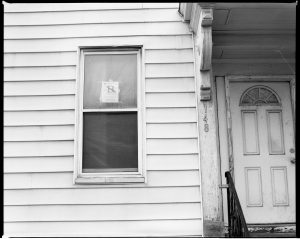One of the hardest things to find when you are on public assistance is housing. It can be very common as a tenant to find a potential landlord only to have that landlord change their behaviour when they find out that the potential tenant is on public assistance. Landlords stop answering phone calls or emails, become more curt and dismissive of the tenant, or even out right tell the tenant that they will not rent to them. All because the tenant relies on public assistance to survive.
It’s a shameful feeling. No one wants to be turned away because they are using financial help with their daily living.
When we think of reasons someone may discriminate against someone; we generally think of race, gender, or physical disability. What some people don’t know that discriminating against someone because they are in receipt of public assistance is a violation under the Human Rights Code.
What is public assistance?
Normally, we would turn to the Human Rights Code for the definition of a term. Unfortunately, there is no definition for public assistance in the Human Rights Code. Without a statutory definition, the next step would be to find a decision that confirms the definition of public assistance. Once again, we run into the issue of defining public assistance as there is no major decision defining public assistance. The closet decision we could find was Jacob v. Board of Directors, Cawthra Mansions Co-op, 2013 HRTO 560.[mfn]Jacob v. Board of Directors, Cawthra Mansions Co-op, 2013 HRTO 560 (CanLII), <https://canlii.ca/t/fx2f4>, retrieved on 2022-05-16[/mfn] The Board stated at paragraphs 10, 11, and 14:
[10] Finally, the applicant argues that the ground of “receipt of public assistance” is not limited to people in receipt of social assistance, but is broader and includes people like her and others who receive a housing subsidy. She says that the source of the money for the subsidy is public (Canada Mortgage and Housing Corporation or “CMHC”).
[11] The respondent makes several arguments. Firstly, it argues that there is no link to a Code ground. The respondent says that “public assistance” is synonymous with “social assistance” and is not broad enough to encompass receipt of a housing subsidy. The respondent also argues that the source of the subsidy in question is a combination of public and private money and is, therefore, not “public assistance”.
(…)
[14] I am not persuaded that the ground of “receipt of public assistance” is restricted to only those in receipt of social assistance. The Code does not define “public assistance” and a large and liberal construction of the language in the Code may well lend itself to a broader view of what the ground entails. However, in the instant Application, it is unnecessary for me to rule on this particular question, given my findings below.
In essence the Tribunal is stating that public assistance is the same as social assistance. Social assistance generally means Ontario Disability Support Payments (ODSP) or Ontario Works (OW). What is important to note is that the Tribunal left the door open to expand that definition to include other forms of assistance, such as a housing subsidy or even educational grants. However to expand the definition of public assistance to include other forms of assistance would require the right facts while relying on a broad interpretation of the Human Rights Code.
When Is It Discrimination?
When it comes to discrimination, there is a three part test. The three part test was discussed in the article Discrimination and the Principal. [mfn]Discrimination and the Principal, Mitchell Kent, riverview.legal/2022/02/04/discrimination-and-the-principal[/mfn] To recap it here:
- Does the person in question have a characteristic that is protected from discrimination?
- Was there an adverse impact with respect to service?
- Was the protected characteristic a factor in the adverse impact?
While discrimination can happen in a variety of ways, the most common forms of discrimination when it comes to public assistance is fairly blatant. An extremely common example goes a lot like this:
Landlord: What do you do for work?
Potential Tenant: I am not working at the moment, I am on ODSP.
Landlord: Oh.
*Landlord’s behaviour changes*
Another frighteningly common examples goes like this:
Landlord: I don’t rent to people who collect welfare.
Potential Tenant: Oh….
*Potential Tenant’s becomes dejected*
Those two examples check all the parts of the discrimination test. Receipt of public assistance is protected from discriminations, there was an adverse impact to the Tenant not being able to rent from the Landlord, and being on public assistance was the protected characteristic factor in the adverse impact.
The above examples are both factually and legally simple. Once again, these are extremely common examples.
Silent Discrimination
Unfortunately, sometimes the discrimination can be silent. Silent in the sense that it is systemic. The potential landlord may be willing to rent to someone on public assistance however there is a rule that implicitly discriminates against people who are on public assistance. When this happen, it can just discouraging as open discrimination. The good news is that systemic discrimination can be challenged at the Human Rights Tribunal. The case of Kearney v. Bramalea Ltd. (No. 2), 1998 CanLII 29852 (ON HRT) dealt with the issue of systemic discrimination and public assistance. [mfn]Kearney v. Bramalea Ltd. (No. 2), 1998 CanLII 29852 (ON HRT), <https://canlii.ca/t/gc6b4>, retrieved on 2022-05-16[/mfn]
Three people were discriminated against because the Respondents had a rule in place, the income to rent ratio rule. All three people were denied renting from the prospective landlord because of the income to rent rule. The Respondents attempted to argue that the income to rent rule was a bona fide requirement and that the Human Rights Code does not prohibit discrimination when it comes to granting credit. The Tribunal summed up its findings at paragraph 195:
[195] After careful consideration of the submissions of the parties… we have decided that the respondents’ use of income criteria to exclude the complainants from housing in their respective buildings constitutes adverse effect or constructive discrimination… There was substantial evidence that the use of the criteria disproportionately excludes groups protected by the Code from rental housing… There was simply no evidence to support a finding that the use of income criteria in the selection of tenants is reasonable and bona fide. We find that the use of income criteria to select tenants violates the Code, whether it is used by itself or in conjunction with other selection criteria.
How Did The Tribunal Come That Decision?
It took sixty days of hearings spread out over three years for the Tribunal to come to that decision. The three applicants relied on several different experts, who explained to the Tribunal the affects of income to rent rules on marginalized communities. Kearney v. Bramalea Ltd. was a fact heavy case however legally it was a simple case.
The Tribunal dealt with two main legal issues:
- Does the interpretation of the human rights support the three applicants’ position?
- Was there a prima facie case of discrimination?
Interpreting Human Rights
When it came to interpreting human rights, the Tribunal relied on the Supreme Court decision Battlefords and District Co-operative Ltd. v. Gibbs, 1996 CanLII 187 (SCC), [1996] 3 SCR 566. [mfn]Battlefords and District Co-operative Ltd. v. Gibbs, 1996 CanLII 187 (SCC), [1996] 3 SCR 566, <https://canlii.ca/t/1fr6c>, retrieved on 2022-05-17[/mfn] At paragraph 18, the Court stated:
This Court has consistently held that human rights legislation is “fundamental” or “quasi-constitutional” and as such should be interpreted in a broad and purposive manner.
It is important to note that in Battlefords and District Co-operative Ltd. v. Gibbs, the Court relied upon several decisions that supported the position that human rights legislation must be given a broad interpretation. With out a broad interpretation, human rights legislation is ineffective at combating discrimination in society.
Prima Facie Case of Discrimination
For this legal issue, the Tribunal relied upon the tribunal decision Thorne v. Emerson Electric Canada Ltd., 1993 CanLII 16439 (ON HRT).[mfn] Thorne v. Emerson Electric Canada Ltd., 1993 CanLII 16439 (ON HRT), <https://canlii.ca/t/gbhg7>, retrieved on 2022-05-17[/mfn] At paragraph 16, the Tribunal stated:
1. a requirement, qualification or factor in itself not discriminatory on a prohibited ground does exist;
2. the existence of this requirement, qualification or factor adversely affects a person or group of persons identified by a prohibited ground of discrimination; and
3. the complainant as a member of the prohibited group has been adversely affected by the requirement, qualification or factor.
These were the same three factors highlighted earlier, just differently worded. When it came to Kearney v. Bramalea Ltd., the Tribunal summed the factors and the legal test at paragraph 106:
(a) Existence of the factor — that the landlord uses a rent/income ratio or income criterion as a factor in assessing applications; that the use of such a factor is a “requirement, qualification or factor” as those words appear in s. 11 of the Code.
(b) Effect of the factor — that using the factor results in the “exclusion, restriction or preference of a group of persons who are identified by a prohibited ground of discrimination”.
(c) Membership in the protected group — that the complainant (the applicant for tenancy with that particular landlord) is a member of the group (or groups if applicable) referred to in clause (b) above.
What Does this Mean?
Ultimately, the rules in Kearney v. Bramalea Ltd. were found to be discriminatory for the above reasons. The Tribunal issued awards of $4,000 to $5,000 in general damages with interest dating as far back as 1988. The decision was released in 1998. That’s 10 years worth of interest. Also the damages were in 1998 dollars, not 2022 dollars.
This decision showed that rules put into place to guarantee that tenants can pay the rent, can be discriminatory.




